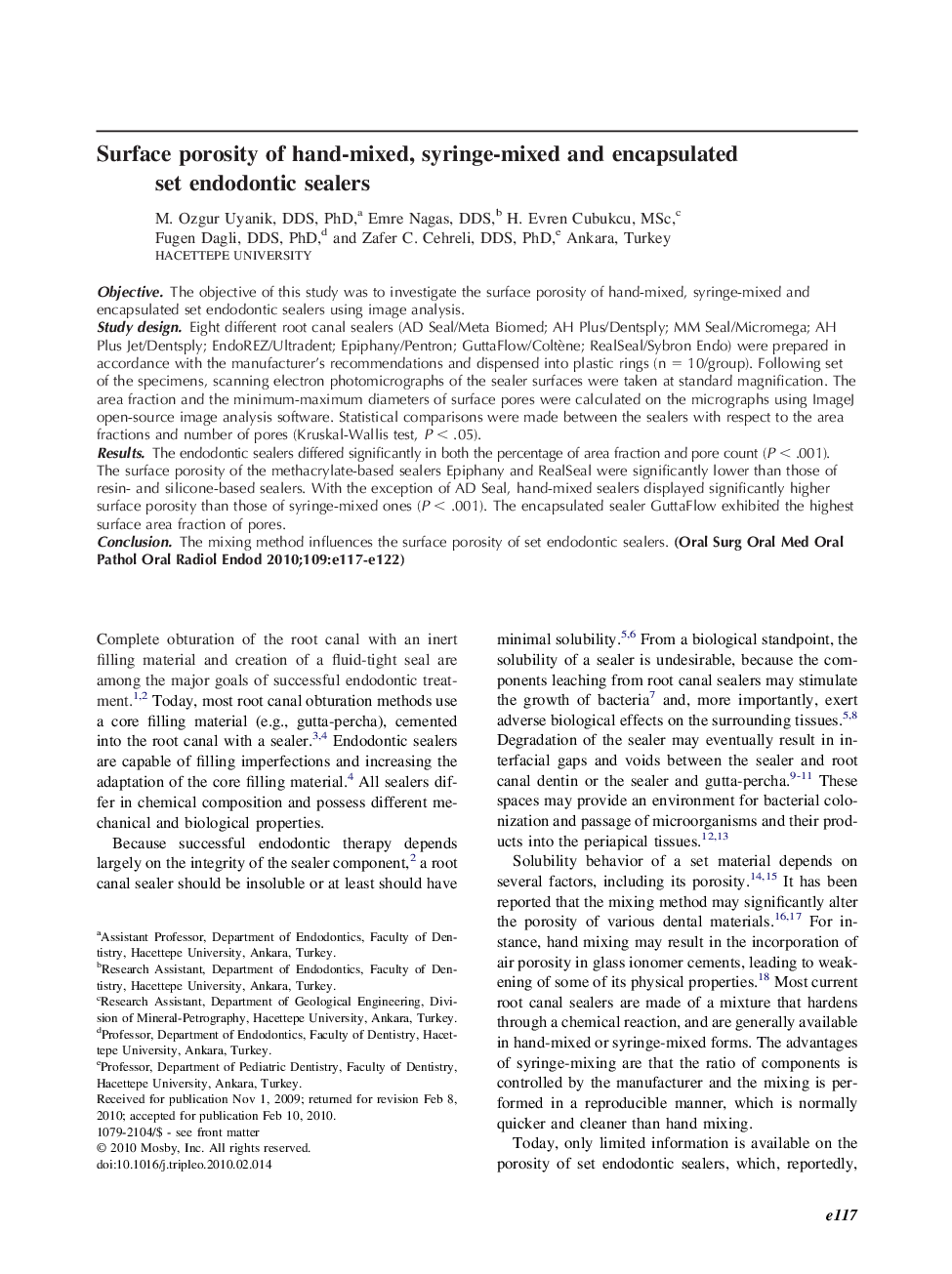| Article ID | Journal | Published Year | Pages | File Type |
|---|---|---|---|---|
| 3167384 | Oral Surgery, Oral Medicine, Oral Pathology, Oral Radiology, and Endodontology | 2010 | 6 Pages |
ObjectiveThe objective of this study was to investigate the surface porosity of hand-mixed, syringe-mixed and encapsulated set endodontic sealers using image analysis.Study designEight different root canal sealers (AD Seal/Meta Biomed; AH Plus/Dentsply; MM Seal/Micromega; AH Plus Jet/Dentsply; EndoREZ/Ultradent; Epiphany/Pentron; GuttaFlow/Coltène; RealSeal/Sybron Endo) were prepared in accordance with the manufacturer's recommendations and dispensed into plastic rings (n = 10/group). Following set of the specimens, scanning electron photomicrographs of the sealer surfaces were taken at standard magnification. The area fraction and the minimum-maximum diameters of surface pores were calculated on the micrographs using ImageJ open-source image analysis software. Statistical comparisons were made between the sealers with respect to the area fractions and number of pores (Kruskal-Wallis test, P < .05).ResultsThe endodontic sealers differed significantly in both the percentage of area fraction and pore count (P < .001). The surface porosity of the methacrylate-based sealers Epiphany and RealSeal were significantly lower than those of resin- and silicone-based sealers. With the exception of AD Seal, hand-mixed sealers displayed significantly higher surface porosity than those of syringe-mixed ones (P < .001). The encapsulated sealer GuttaFlow exhibited the highest surface area fraction of pores.ConclusionThe mixing method influences the surface porosity of set endodontic sealers.
